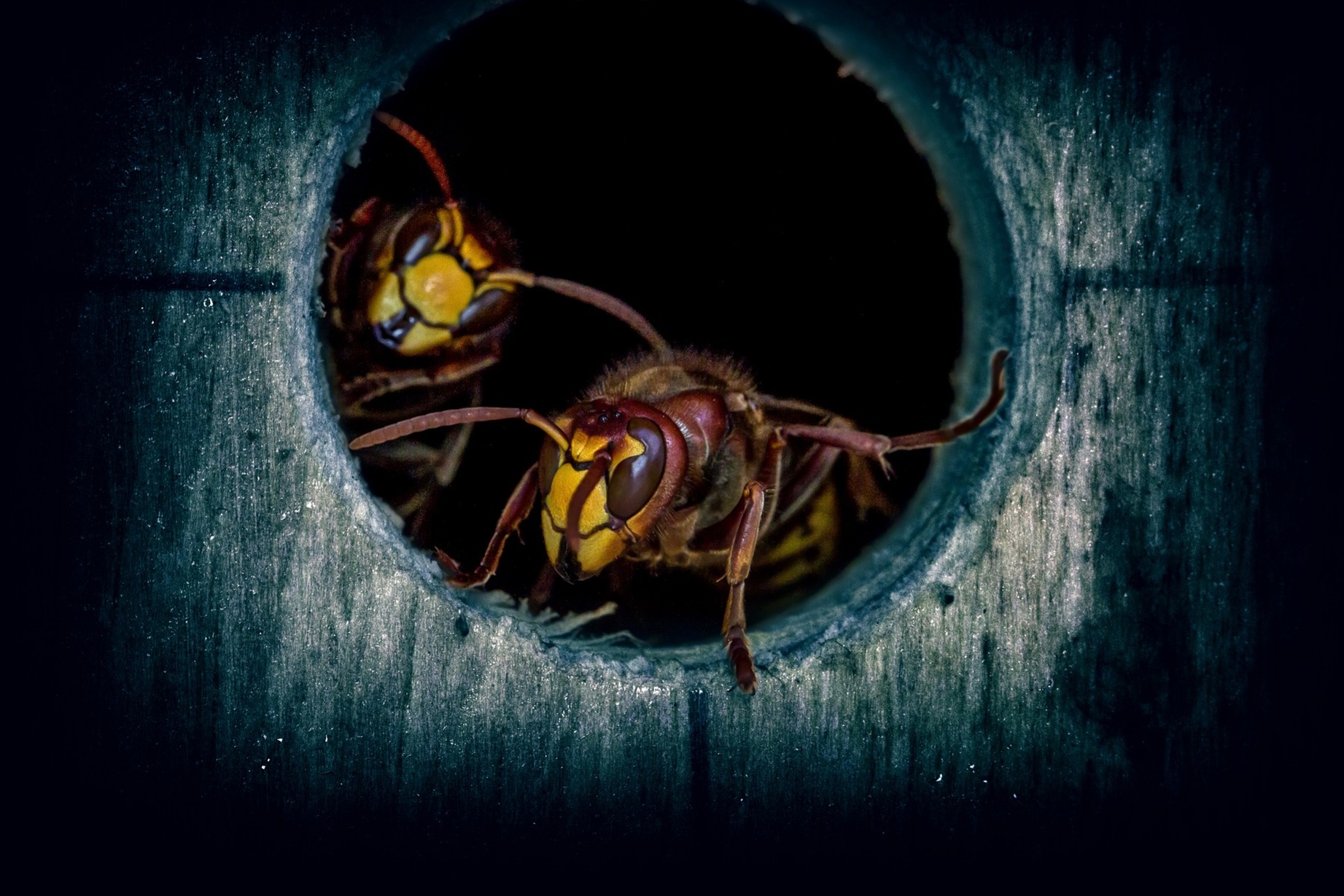Wasps and hornets - summer pests
Posted on 29th October 2016 at 10:23

Hornets are similar to wasps and are unpleasant to have around and dangerous when disturbed - find out about wasp control from All Aspects Pest Control covering Wokingham, Reading and surrounds of Berkshire.
Hornets are a social insect very similar to wasps, and they are referred to as a grist or a hive as a collective, and they have pretty much the same characteristics as common wasps but due to their large size and the loud buzzing sound they make, they are often invoke a much greater fear in people.
Hornets are really big, are they aggressive like wasps?
The European Hornet; Vespa crabro is a rather docile stinging insect that, just like wasps doesn't have a barbed stinger, so they can sting multiple times when threatened. Although rather docile in manner they will become aggressive and release attack pheromones when their nest is believed to be under attack resulting in a swarm of angry hornets, and given their large size of around 2 inches, that's pretty scary.
Is it dangerous to tackle a hornets nest?
People often ask if its scary treating hornets nests; hornets tend to ignore you if you stay away from the entrance of the nest even while your treating them with the insecticide powder; wasps however will investigate you even when at a distance and often become aggressive to your presence and your more likely to get stung by these. Remember that pest controllers wear protective suits and are trained to deal with these insects.
What do hornets feed on?
Both wasps and hornets don't eat insects; these they catch and chew into a pulp which they feed to the growing larvae back in their nest. Just like wasps the hornets have a sweet tooth and they will often land on fallen apples and burrow their way completely into the flesh of apple feeding on the sugars within; this presents a danger and common encounter for humans when picking up windfall apples and soft fruit.
Wasps often build their nests in lofts, where do hornets live?
Queen Hornets prefer to build their nests in hollow tree's and they will often be found in wooden sheds and outbuildings; these nests though not as heavily populated as the wasp, which can hold up to 15,000 drones, can have as many as 700 hornets in; making them a formidable task for pest controllers. Just as in wasps the life cycle of hornets runs along a similar time-line; late summer the last egg's will hatch into fertile females and males. These will fly off and mate, and then the fertilised female will seek somewhere dry and warm for hibernation while the old Queen dies and the colony breaks down.
Are there any more species of hornet in the UK?
One hornet that gives pest controllers and bee keepers cause for concern is the Asian Yellow Footed Hornet, sometimes known as the Asian Predatory Wasp. These have been accidentally introduced into France during 2004 and now range throughout the French mainland decimating honeybee colonies as they feed almost exclusively on honeybees. These are uncommon amongst wasps and hornets as their colonies contain multiple numbers of Queens; this means that as a species they are very successful and spread quickly.
The Asian Hornet also packs a powerful sting and due to the colony size, location; as they will often nest in hedgerows they have resulted in deaths and hospitalisation of victims, at present none of these hornets have been reported in England but given their success its only a matter of time.
Tagged as: Wasps, bee's and hornets
Share this post:





